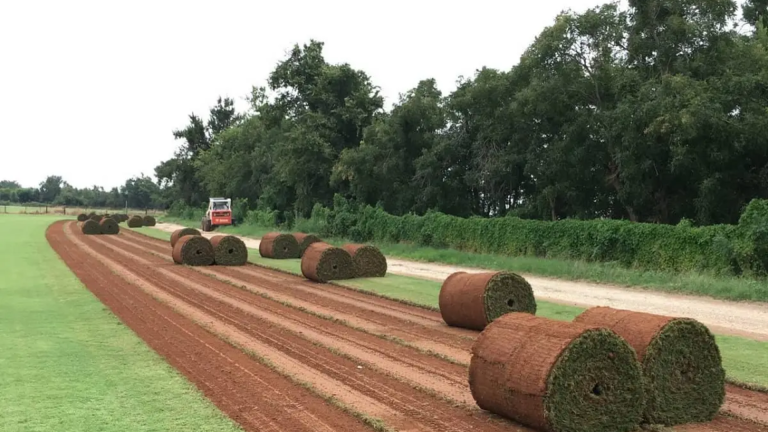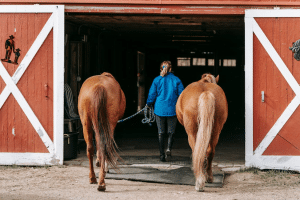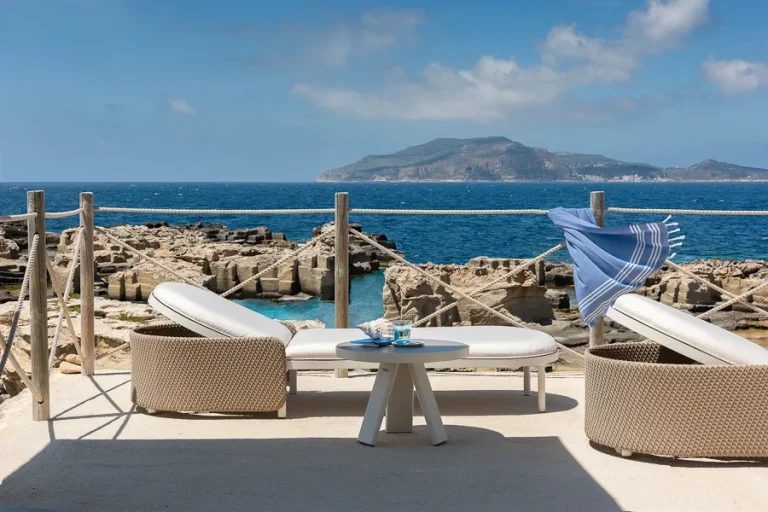Choosing the right type of sod for your lawn is an important decision that can make a big difference in how your yard looks and feels. Sod is a quick and easy way to get a green, lush lawn without the wait, but not all types of grass are the same.
Some types thrive in hot, sunny climates, while others do better in cooler areas. Whether you’re dealing with heavy foot traffic, limited sunlight, or dry conditions, there’s a sod variety that will work for your yard.
In this blog, we’ll go over the different types of sod, their benefits, and how to choose the best one for your home. By the end, you’ll be ready to pick the perfect sod for a healthy, beautiful lawn!
Understanding Sod and Its Importance
Sod is a type of grass that’s already grown, with roots and soil attached, making it an easy way to get a green lawn quickly. Instead of waiting for grass to grow from seed, you can roll out sod and have an instant lawn. It’s often used when you want to improve your yard right away, especially in areas that are hard to grow grass in naturally.
Sod is important because it helps reduce erosion, provides a soft surface for playing, and gives your yard a clean, healthy look. It can also improve the air quality by producing oxygen and reducing dust.
Depending on where you live, choosing the right type of sod is key to making sure it grows well and stays healthy. Whether you want a lawn for relaxing, playing, or improving your home’s curb appeal, sod can help you get there fast.
Warm-Season Grasses
Warm-season grasses are perfect for areas that experience hot summers. These grasses love the sun and are very drought-tolerant.
1. Bermuda Grass
- Best for: Hot, sunny areas (zones 7–10).
- Why it’s great: Bermuda grass is tough and can handle a lot of foot traffic. It’s great for lawns, sports fields, and golf courses. However, it needs full sunlight and does not grow well in the shade.
2. Zoysia Grass
- Best for: Transition zones (zones 5–10).
- Why it’s great: Zoysia grass is drought-tolerant and grows slowly, which means less mowing. It’s good for lawns with moderate sun or partial shade and can handle different soil types.
3. St. Augustine Grass
- Best for: Coastal areas (zones 8–10).
- Why it’s great: This type of grass is perfect for humid areas. It’s broad and lush, making it an excellent choice for a beautiful lawn that tolerates heat, salt, and some shade.
4. Centipede Grass
- Best for: Southeastern U.S. (zones 7–10).
- Why it’s great: Centipede grass requires very little maintenance. It’s great for areas with poor, acidic soil. It’s slow-growing and doesn’t need as much water or fertilizer compared to other grasses.
5. Bahiagrass
- Best for: Hot, dry climates (zones 9–10).
- Why it’s great: Bahiagrass is very drought-tolerant and grows well in sandy soils. It’s low-maintenance and perfect for lawns where you want a hardy grass that doesn’t need much attention.
Cool-Season Grasses
Cool-season grasses are better for cooler climates and perform well during the spring and fall.
6. Kentucky Bluegrass
- Best for: Northern climates (zones 2–6).
- Why it’s great: Kentucky bluegrass is known for its rich, dark green color and fine texture. It grows quickly in the cooler months and creates a beautiful, soft lawn.
7. Tall Fescue
- Best for: Transition zones (zones 4–7).
- Why it’s great: Tall fescue is tough, drought-resistant, and can handle some shade. It grows well in a variety of soils and requires less watering than some other cool-season grasses.
8. Fine Fescue
- Best for: Shaded areas (zones 4–7).
- Why it’s great: Fine fescue is ideal for lawns with little sunlight. It grows well in shaded areas and is very low-maintenance. This type of grass is perfect for those who want a soft, delicate lawn that doesn’t require much care.
9. Perennial Ryegrass
- Best for: Cool climates (zones 3–6).
- Why it’s great: Ryegrass grows quickly and is perfect for overseeding. It’s durable and can handle wear, which makes it a good choice for high-traffic areas like sports fields.
Other Types of Grass
These grasses fall somewhere in between warm and cool-season types and can be more versatile depending on where you live.
10. Buffalo Grass
- Best for: Dry, hot areas (zones 3–9).
- Why it’s great: Buffalo grass is native to North America and thrives in dry, hot conditions. It’s low-maintenance and doesn’t need much water, making it ideal for drought-prone areas.
11. Bermuda Hybrid Grass
- Best for: Extremely hot and sunny regions.
- Why it’s great: This hybrid version of Bermuda grass is even tougher and more drought-resistant than the standard Bermuda grass. It’s often used for high-traffic areas, including sports fields.
Whether you live in a hot, sunny area or a cooler, shaded region, there’s a type of sod that will thrive in your backyard. By understanding the characteristics of each type, you can create a beautiful, low-maintenance lawn that fits your lifestyle. So, before you lay down sod, make sure to choose the right type for a healthy, vibrant lawn that lasts!
Choosing the Right Sod for Your Region
Picking the right type of sod for your region is important to make sure your lawn grows well and stays healthy. Different grasses thrive in different climates, so it’s essential to choose one that matches your area’s weather, soil, and sunlight.
1. Know Your Climate Zone: Before choosing sod, it’s important to know what climate zone you live in. Warm-season grasses do best in hot, sunny climates, while cool-season grasses are better for cooler regions.
2. Warm-Season vs. Cool-Season Grasses: Warm-Season Grasses are those types of grass that love the heat and grow best in the summer. Cool-Season Grasses are those types of grasses that grow best in the spring and fall when temperatures are cooler.
3. Consider Sunlight: Different grasses need different amounts of sunlight to grow. Think about how much sun your yard gets during the day and choose a grass type that fits.
4. Think About Maintenance: Some types of sod, like Zoysia and Centipede grass, are low-maintenance and require little care, while others need more attention, such as regular mowing and watering. Choose a type that matches how much time you’re willing to spend on lawn care.
5. Watering Needs: If you live in a dry area, choose a drought-tolerant grass like Bermuda or Buffalo grass. These grasses require less water, making them ideal for regions where water conservation is important.
Choosing the right sod for your region isn’t just about picking the prettiest grass—it’s about finding one that will thrive in your local conditions. By considering your climate, sunlight, maintenance needs, and watering requirements, you can select the perfect type of sod that will create a healthy, beautiful lawn all year round.
Sod Installation Tips
Installing sod is a quick way to get a beautiful, green lawn. If done correctly, your sod will take root and grow strong, giving you a lush yard in no time.
- Prepare the Soil: Before laying sod, clear the area of weeds, rocks, and debris. Use a rake to level the soil, creating a smooth, even surface. This will help the sod settle in properly.
- Lay Sod Immediately: Once you get your sod, install it as soon as possible to prevent it from drying out. If you can’t lay it right away, stack the rolls in a shaded area and water them.
- Stagger the Seams: When laying sod, stagger the seams like brickwork to avoid creating visible lines. This helps the grass grow together more evenly.
- Water Right After Installation: Water the sod immediately after installation. Keep the sod watered for the first few weeks to help it root properly. Make sure the water soaks deeply into the soil.
- Keep Mowing Low: Once your sod is established, mow it regularly, but avoid cutting it too short. Set your mower to a higher setting to encourage healthy grass growth.
By following these simple sod installation tips, you can enjoy a fresh, healthy lawn in no time. Proper preparation, timely installation, and ongoing care will give your sod the best chance to grow strong and vibrant. With a little effort, your yard will be looking great all year round!
Conclusion
In conclusion, choosing the right type of sod and installing it properly is key to achieving a beautiful, healthy lawn. Whether you opt for warm-season grasses like Bermuda or cool-season varieties like Kentucky Bluegrass, it’s important to match the grass type to your region’s climate, soil, and sunlight.
Once you’ve picked the right sod, follow proper installation tips like preparing the soil, laying the sod promptly, and watering it well. With minimal maintenance and care, your sod will take root and grow into a lush, green lawn that you can enjoy year-round.
By making smart choices in sod selection and installation, you’ll be able to create a beautiful outdoor space that’s both low-maintenance and long-lasting. So, start planning your sod installation today, and soon you’ll have the vibrant lawn you’ve always dreamed of!
















